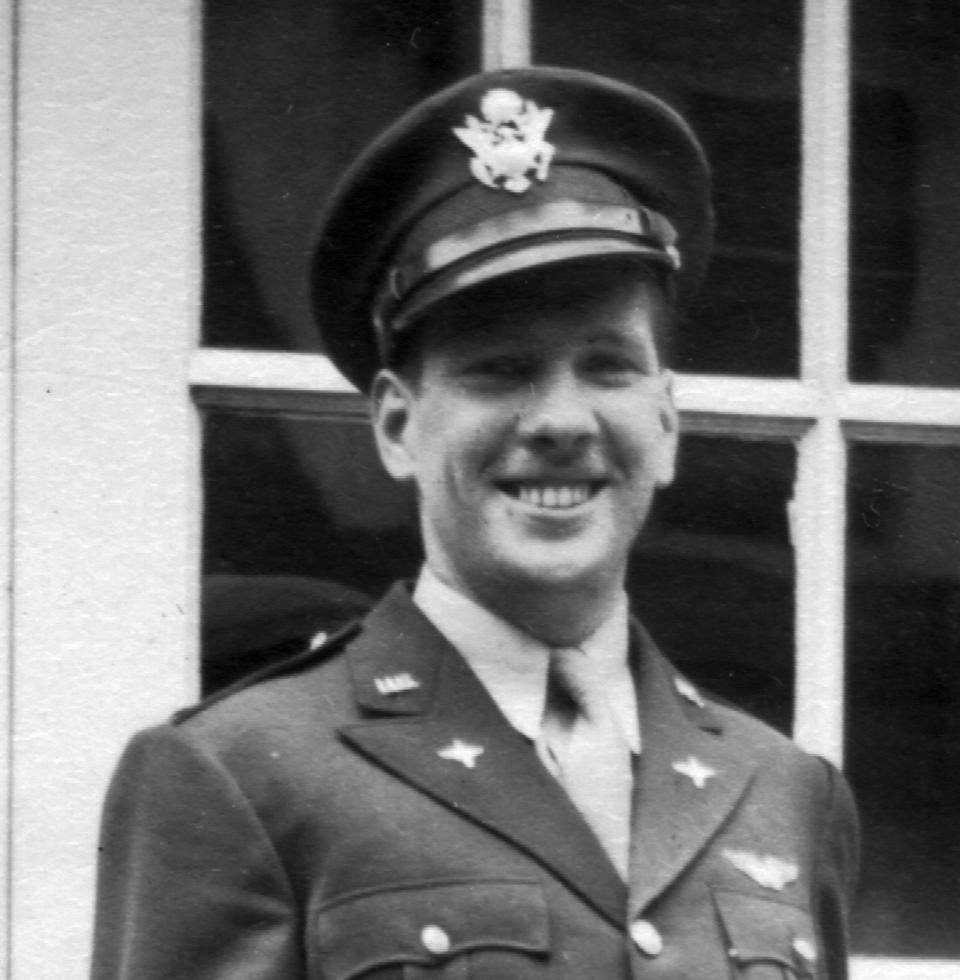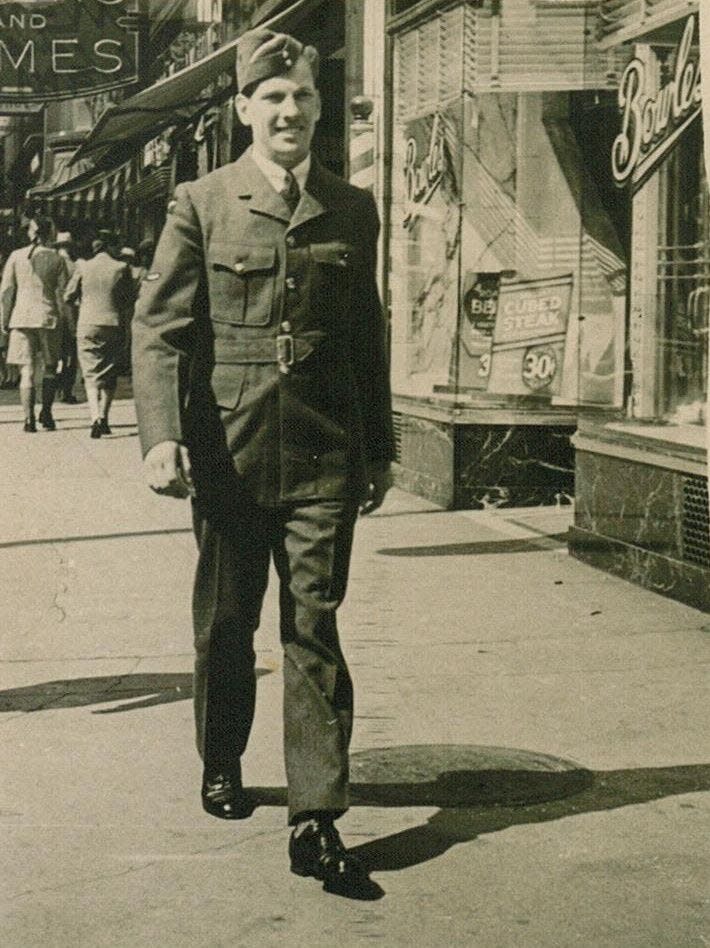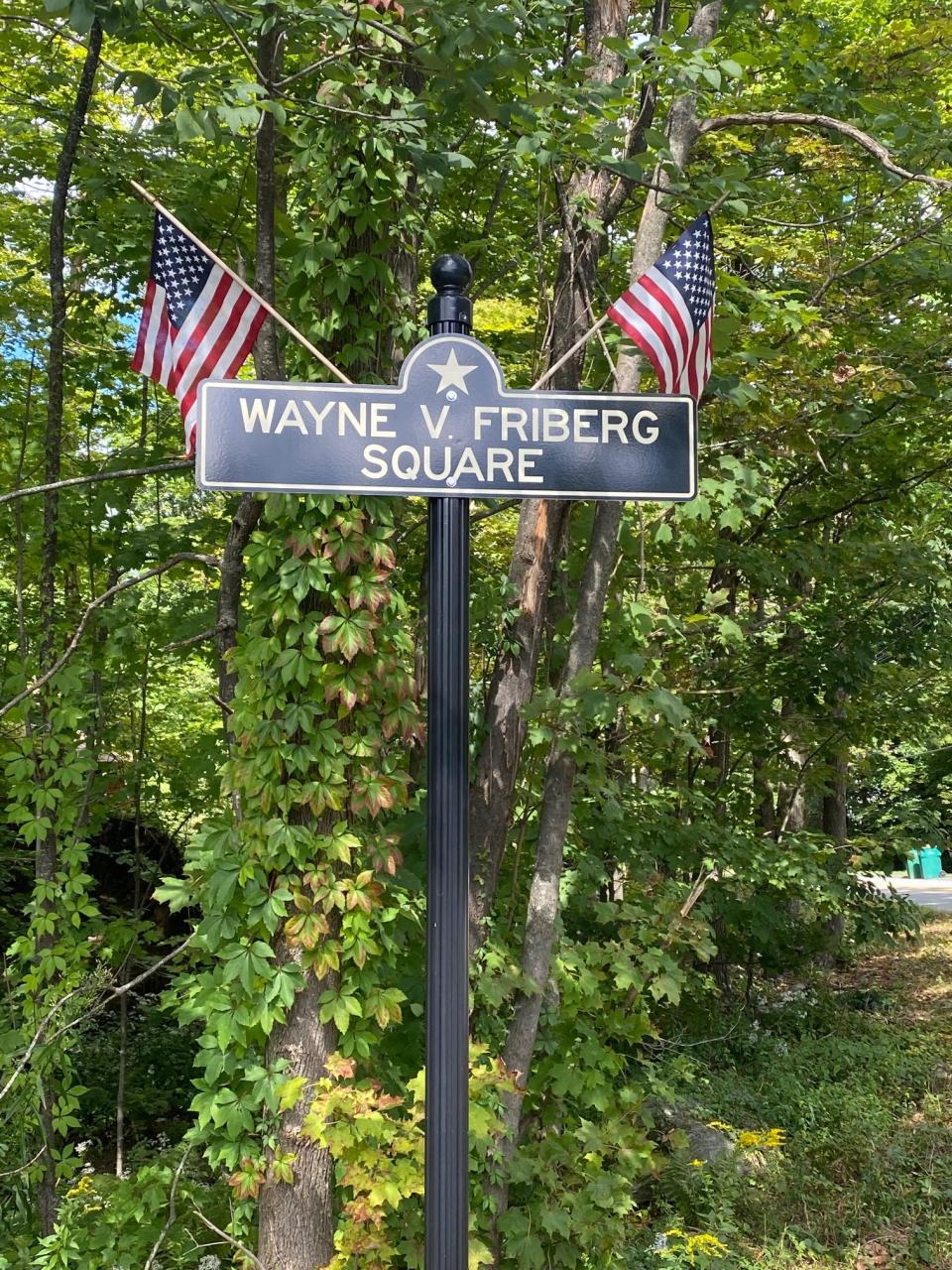Lt. Waino Friberg was shot down off the coast of Naples, Italy
WESTMINSTER – In an interview with Mark Landry, a member of the Westminster veteran’s committee, Frank Friberg described his brother Wayne as “a bit of a daredevil.”
“There was nothing that he was afraid of,” Frank Friberg noted. “When he was a kid, Wayne was so confident in his own abilities that just for fun he would run at full speed along the top of stone walls.”
While it was noted that the approach may have helped him while in the service, surviving many close calls, it appears his luck may have run out when Lt. Friberg was lost in the crash of a plane he was piloting.
Landry provided a good deal of information to help complete this column, as well as each on soldiers from Westminster.
This is the continuation of the series Remembering Local World War 2 Heroes.
1st. Lt. Waino V. Friberg (1917-1943)
Waino Victor Friberg was born on Jan. 20, 1917 to John Arvid Johansson and Elizabeth Wilhelmiina Adolfiinasdotter (Lappamaki) Friberg, one of 12 children. His father came to the U.S. in 1905 from England and year and a half later, his mother Wilhelmina joined him with their three eldest children Laura, Eino and Katherine.
After spending a couple of years living in Worcester, the family moved to Westminster in 1909 to live with Mrs. Friberg’s father John Maki (his Finnish name shortened from Lappamaki) on Worcester Road. Later, John Friberg purchased a farm on 101 East Gardner Road, not far from the Gardner State Colony. In that home, Waino was born.
Waino attended the Upton Grammar School in town as well as the junior high school there. He moved on to Fitchburg High School where he was an honor graduate in 1935. Among the favorite activities of his teen years were fishing, hunting, swimming and playing golf.
More: Staff Sgt. Edwin Darling was one of eight WWII casualties from Westminster

Following his graduation he took several jobs, first as an attendant at the nearby Gardner State Hospital, later with the Heywood-Wakefield Company in Gardner. He was also a sales clerk with the United Co-op Farmers Company in Fitchburg.
In 1940 at the age of 23, Wayne moved to Greenburgh, N.Y. living with his sister, Ellen and her husband, David Whyte. While there, he enrolled in a civil aeronautics ground course in Yonkers studying navigation and meteorology. He later took night courses at Columbia University studying mathematics, English and history, while working day jobs.
Wayne wanted to be a pilot for the U.S. Army but was short of required college courses.
In April of 1941, he moved to Ottawa, Canada and signed up for the Royal Canadian Air Force where he spent 13 months and received his pilot’s instruction. He was made a Sergeant on July 11 and earned his wings on November 6, nearly a month before the attack on Pearl Harbor.
With the United States now immersed in a war, a call went out to American pilots flying for allies to join the American Air Force. Wayne answered the call and arrived at Maxwell Field in Alabama in May of 1942.
He was commissioned as a 2nd Lieutenant and relocated to a number of U.S. airfields in Florida, Arkansas, New Mexico, North Carolina, Tennessee, Texas, Utah and California. While he was in Tennessee, he met Adele Dufour Allport who had been working at the base installing radios in military aircraft. They were married in Florida on September 27, 1942.
More: Greater Gardner's first WWII victim hailed from Otter River
Wayne moved on to train at the Blythe Army Airfield in California, preparing to pilot the large B-24 fighter plane. The 4-engine, heavy bomber could carry a bomb load of 8,000 pounds with a range of 2,200 miles at a cruising speed of 190 miles per hour.
A typical B-24 bomber crew was made up of ten men which included four officers: the pilot, co-pilot, navigator and bombardier. The remainder of the crew were the flight engineer, two waist gunners, a radio operator, tail gunner and ball turret gunner.
Through 1943, British and American Strategic Bomber Command, after capturing air bases on the northern coast of Africa, sought to strike German oil refineries in Romania with their new long-range B-24 bombers.
In early August, Friberg was among the airmen who reportedly blasted the great German-held oil refineries at Ploesti, Romania located some 35 miles north of the capital city, Bucharest.

In the August 27, 1943 Fitchburg Sentinel, it was noted that Lt. Friberg was a participant in a raid by American Liberator bombers. The force “flew low over the rich oil fields and dropped tons of incendiaries and huge explosives setting fire to unestimated quantities of oil.”
Ironically, while the newspaper spoke of Friberg’s heroics, he had been killed prior to the story being sent to the paper.
On August 19, 1943, Lt. Friberg was on a return trip to Foggia in Italy, this time to strike the railroad marshalling yards. The B-24 he flew for the day’s mission was called “Little Richard.”
According to a narrative put together by Landry, the railroad yards were successfully targeted and the fleet of bombers headed west across the width of Italy’s boot toward the Tyrrhenian Sea. Planes were in a loose box formation, with Friberg flying in the position nicknamed “Tail-end Charlie”. Of the 17 planes that made up the box, Friberg’s was the lowest one in the rear and in the most vulnerable position.
Some 40 miles northeast of Sicily, the “Little Richard” continued to lag behind his squadron by several hundred yards. As German Me-109 fighters swooped down, Friberg was suddenly too far away to get into formation.

Lt. Waino Hakkinen, ironically from nearby Gardner, had been in another plane flying in the mission and saw six enemy fighters strike the “Little Richard” in their first pass. He reported seeing the gun barrels from the tail gunner slouch, indicating that the tail gunner on Friberg’s plane had been hit.
Unable to get the plane back into formation, several members of the crew were seen to parachute from the stricken plane before – engulfed in flames – “Little Richard” crashed into the sea about 100 miles off the coast of Naples, Italy.
It was believed Friberg went down with the plane as neither the wreckage, nor his body were ever recovered. The 26-year-old First Lieutenant was reportedly killed on August 19, 1943. He is listed on the Tablets of the Missing at Sicily-Rome American Cemetery in Lazio, Italy.
Three of his brothers Paul, Arthur and Frank served their country during World War II. Wayne Friberg was posthumously awarded the Distinguished Flying Cross and the square located at the corner of Oakmont Ave. and East Gardner Road is named in his memory.
His widow remarried Robert W. Caldwell in 1945. They raised three children and were married for 64 years before Robert passed away. Adele died in 2010 at the age of 90.
Comments and suggestions for Remembering Local World War 2 Heroes can be sent to Mike Richard at mikerichard0725@gmail.com or in writing Mike Richard, 92 Boardley Rd. Sandwich, MA 02563)
This article originally appeared on Gardner News: Wayne V. Friberg of Westminster flew B-24 bomber shot down over Italy

